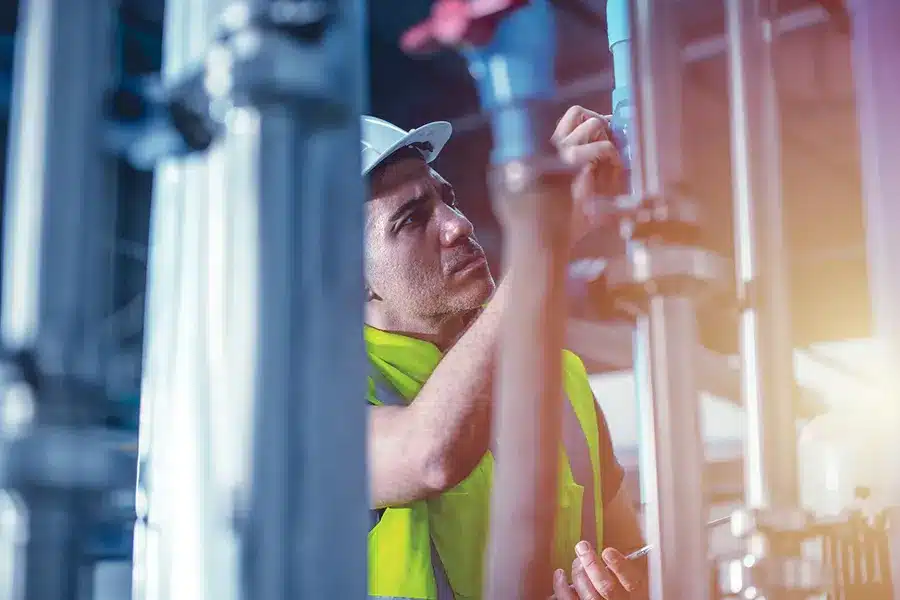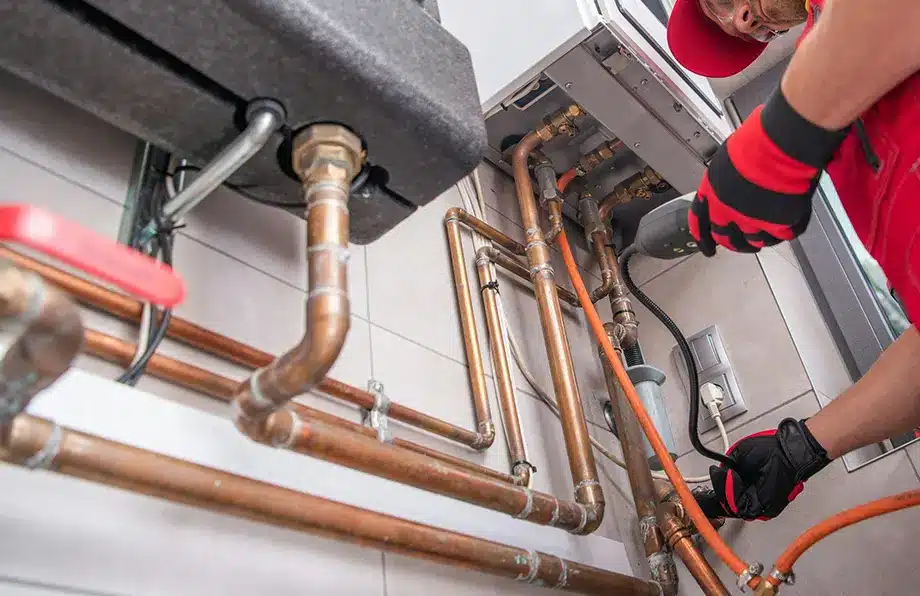Learn about your rights if you or a loved one
suffered a serious injury or fatality from exposure to carbon monoxide at work in Charlotte
In Charlotte and across North Carolina, the invisible threat of carbon monoxide poisoning poses a silent but significant risk to workers across various industries. Exposure can lead to serious injuries or even fatalities if not properly managed, making it crucial for employees and employers alike to be aware of the dangers associated with carbon monoxide and to take preventative measures to ensure a safe working environment.
Additionally, it’s important for workers and their family members to understand that, in the unfortunate event of a serious injury or fatality due to carbon monoxide poisoning at work, they may be entitled to workers’ compensation benefits. These benefits are designed to provide financial assistance and support during the recovery process or in coping with the loss of a loved one.
This article aims to shed light on the risks of carbon monoxide in the workplace and help workers and families understand their rights when such exposure results in catastrophic injury or death.
What is carbon monoxide?
Carbon monoxide (CO) is an invisible gas that is also tasteless and odorless. It’s produced by the incomplete combustion of certain materials that contain carbon, such as coal, natural gas, gasoline, oil, and wood. Because it is impossible to see, taste, or smell, carbon monoxide can poison people and animals without them even realizing it.
Carbon monoxide binds with hemoglobin in the blood, forming carboxyhemoglobin, which inhibits the blood’s ability to carry oxygen to body tissues and vital organs. When high levels of CO are inhaled, the body replaces the oxygen in the blood with CO. This can lead to serious tissue damage or even death.
How common is carbon monoxide poisoning?
Carbon monoxide causes thousands of deaths across the globe each year. In the U.S. alone, at least 420 people die and another 100,000 seek emergency medical care for carbon monoxide poisoning annually, according to the Centers for Disease Control and Prevention (CDC).
What are sources of carbon monoxide?
Common sources of carbon monoxide include the following:
- Vehicles or engines running in an enclosed space. Exhaust from cars, trucks, and other engines contains significant amounts of carbon monoxide. Running a vehicle in an enclosed space like a garage can lead to CO accumulation.
- Heating systems. Improperly vented or malfunctioning furnaces, boilers, water heaters, and fireplaces can release carbon monoxide.
- Gas stoves and ovens. Using gas stoves and ovens for heating or operating them without proper ventilation can produce carbon monoxide.
- Burning charcoal or wood. Charcoal grills, wood stoves, fireplaces, and campfires produce carbon monoxide. Using them in enclosed spaces can lead to CO buildup.
- Portable generators. Running a portable generator inside a home, basement, garage, or near a window can lead to dangerous levels of carbon monoxide indoors.
- Blocked flues or vents. Blocked or damaged chimney flues and vents for appliances can prevent proper venting of CO to the outside.
- Power tools and equipment. Running gas-powered tools and equipment indoors or in poorly ventilated areas can produce carbon monoxide.
- Certain types of space heaters. Non-electric space heaters, especially those that burn fuel like kerosene, can generate carbon monoxide if not used properly.
It’s essential to ensure proper ventilation and maintenance of heating systems, appliances, and vehicles to prevent carbon monoxide buildup. Installing carbon monoxide detectors in homes and workplaces can also help detect and prevent CO poisoning.
Which workers are most at risk of carbon monoxide poisoning?
Workers most at risk of carbon monoxide poisoning include those who work in environments where combustion engines or equipment are used, especially in enclosed or poorly ventilated areas. Key at-risk groups include:
- Construction workers exposed to gas-powered tools indoors or in poorly ventilated areas
- Warehouse workers exposed to forklifts, generators, or heaters with combustion engines that are operated indoors
- Firefighters exposed to carbon monoxide during and after fires
- Agricultural workers exposed to gasoline-powered equipment in poorly ventilated areas, such as barns or greenhouses
- Miners, especially those working in underground locations where ventilation may be inadequate
- Longshore and dock workers exposed to gasoline-powered equipment or vessels emitting CO
- Welders exposed to various combustion byproducts, including carbon monoxide, especially in confined spaces
- Boiler room workers exposed to malfunctioning or improperly ventilated heating systems
- Garage mechanics and auto technicians exposed to vehicle exhaust in enclosed spaces
- Toll booth operators exposed to car exhaust in high-traffic areas
Employers should ensure proper ventilation, use carbon monoxide detectors, and provide personal protective equipment (PPE) to mitigate these risks. Workers should also be trained to recognize symptoms of carbon monoxide poisoning and follow safety protocols to reduce exposure.
Lack of Training: The Deadly Reality for North Carolina Workers
Understand your rights after a work injury caused by inadequate training.
How do you know if there is carbon monoxide in the air?
Detecting carbon monoxide (CO) in the air can be challenging because it is a colorless, odorless, and tasteless gas. The most reliable way to detect CO in the air is by installing carbon monoxide detectors. These devices will sound an alarm when they detect dangerous levels of CO, providing an early warning.
Exposure to carbon monoxide can cause a range of symptoms, including headache, dizziness, weakness, upset stomach, vomiting, chest pain, and confusion. High levels can cause loss of consciousness and death.
What do I do if I was exposed to carbon monoxide?
If you suspect you’ve been exposed to carbon monoxide, immediately move to an area with fresh air, alert your supervisor and other employees who may be exposed, and seek medical attention by calling 911 or going to the emergency room, even if you don’t feel ill.
Inform the medical staff that you suspect carbon monoxide poisoning so they can conduct the necessary blood tests. Do not re-enter the premises until it has been cleared by a professional.
How long does it take for symptoms of carbon monoxide poisoning to resolve?
The resolution of symptoms from carbon monoxide poisoning can vary significantly depending on the severity of the exposure and the individual’s health status.
Mild cases may resolve within a few hours after removal from the exposure and breathing fresh air, but more severe cases, especially those involving prolonged exposure to high levels of carbon monoxide, can result in symptoms that last for days, weeks, or even longer.
Persistent or severe symptoms, such as confusion, memory loss, or difficulty walking, may indicate more serious brain or heart damage and require extensive medical treatment. It’s crucial to seek immediate medical attention if carbon monoxide poisoning is suspected, as the duration and severity of symptoms can be unpredictable.
Understand Your Workers’ Compensation Rights in North Carolina
Learn about your rights and responsibilities under North Carolina’s workers’ compensation laws.
What are my rights if I’ve been exposed to carbon monoxide at work?
If you’ve been exposed to carbon monoxide at work, you have several rights under most labor laws, including those enforced by the Occupational Safety and Health Administration (OSHA) in the U.S.
Firstly, you have the right to a safe workplace that is free from recognized hazards, including harmful levels of carbon monoxide. This means your employer must take reasonable steps to reduce or eliminate exposure risks.
If you’ve been exposed, you have the right to seek medical attention and to report the exposure without fear of retaliation. You also have the right to request an OSHA inspection if you believe there are unsafe conditions or violations of standards at your workplace.
If the exposure leads to significant medical issues, you may be entitled to workers’ compensation benefits, which can include medical expenses, a portion of your lost wages, and disability benefits if you’re unable to return to work. Family members whose loved one dies from a work-related carbon monoxide exposure may also be entitled to death benefits.
It’s important to report the exposure to your employer as soon as possible and to document any medical care received as a result of the exposure to ensure you remain eligible for these benefits.
Get help from an experienced North Carolina work injury attorney
If you or a loved one has suffered a serious injury or fatality at work due to carbon monoxide poisoning, you may be entitled to benefits through your employer’s workers’ compensation insurance, but these are specific steps and timelines that must be followed to secure these benefits.
At Wilder Pantazis Law Group, our knowledgeable Charlotte workers’ compensation attorneys have more than 85 years of combined experience helping North Carolina workers get the compensation they deserve after a work-related injury or illness.
Contact our office today for a free consultation to learn how we can help you too.
North Carolina Workers’ Compensation for
Gas Leak Injuries
Exposed to a gas leak at work? Understand your eligibility for workers’ comp benefits in North Carolina with our comprehensive guide.




